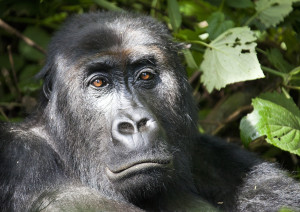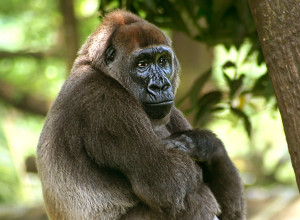Our Mountain and Grauer’s Gorilla Patients
Gorillas only exist in the wild in Africa, where four different gorilla subspecies can be found.

Mountain Gorillas
(Gorilla beringei beringei)

Grauer’s Gorillas
(Gorilla beringei graueri)

Western Lowland Gorillas
(Gorilla gorilla gorilla)

Cross River Gorillas
(Gorilla gorilla diehli)
Gorilla Doctors is dedicated to the care of mountain gorillas, which can be distinguished from their close cousins by their thick hair and ability to live at high altitude. Mountain gorillas live in central Africa, where an estimated 604 animals live in the Virunga Massif, which spans Volcanoes National Park in Rwanda, Virunga National Park in DRC, and Mgahinga Gorilla National Park in Uganda. The other 459 mountain gorillas in the world live within the boundaries of Bwindi Impenetrable National Park in Uganda.
Gorilla Doctors also monitor the health of eastern lowland or Grauer’s gorillas that live in Kahuzi-Biega National Park and the Mt. Tshiabirimu area of Virunga National Park, DRC. The number of Grauer’s gorillas remaining in the wild is difficult to estimate, in part due to the political instability in the region, but most people believe there are well less than ten thousand individuals left, down from tens of thousands of Grauer’s gorillas as recently as the mid-1990s. Gorilla Doctors veterinary team monitors and treats gorillas that are human-habituated—family groups that have grown accustomed to the presence of humans. About 73% of mountain gorillas in the Virunga Massif are habituated for tourism or research purposes, while only about 50% of mountain gorillas in Bwindi Impenetrable National Park are habituated.
There are fewer than 100 habituated eastern lowland gorillas, all living in Kahuzi-Biega National Park in eastern DRC.
Did You Know?
Both mountain and Grauer’s gorillas live in groups ranging in size from a just 5-10 individuals to several dozen members of extended family groups. A dominant silverback—an adult male who shows that he has reached sexual maturity by the silver fur on his back—leads each group, which may include several subordinate silverbacks, blackbacks (adult males who have not yet reached sexual maturity), adult females, juveniles (ranging from ages 4 to 8), and infants (ages 3 and younger).


 Donate
Donate